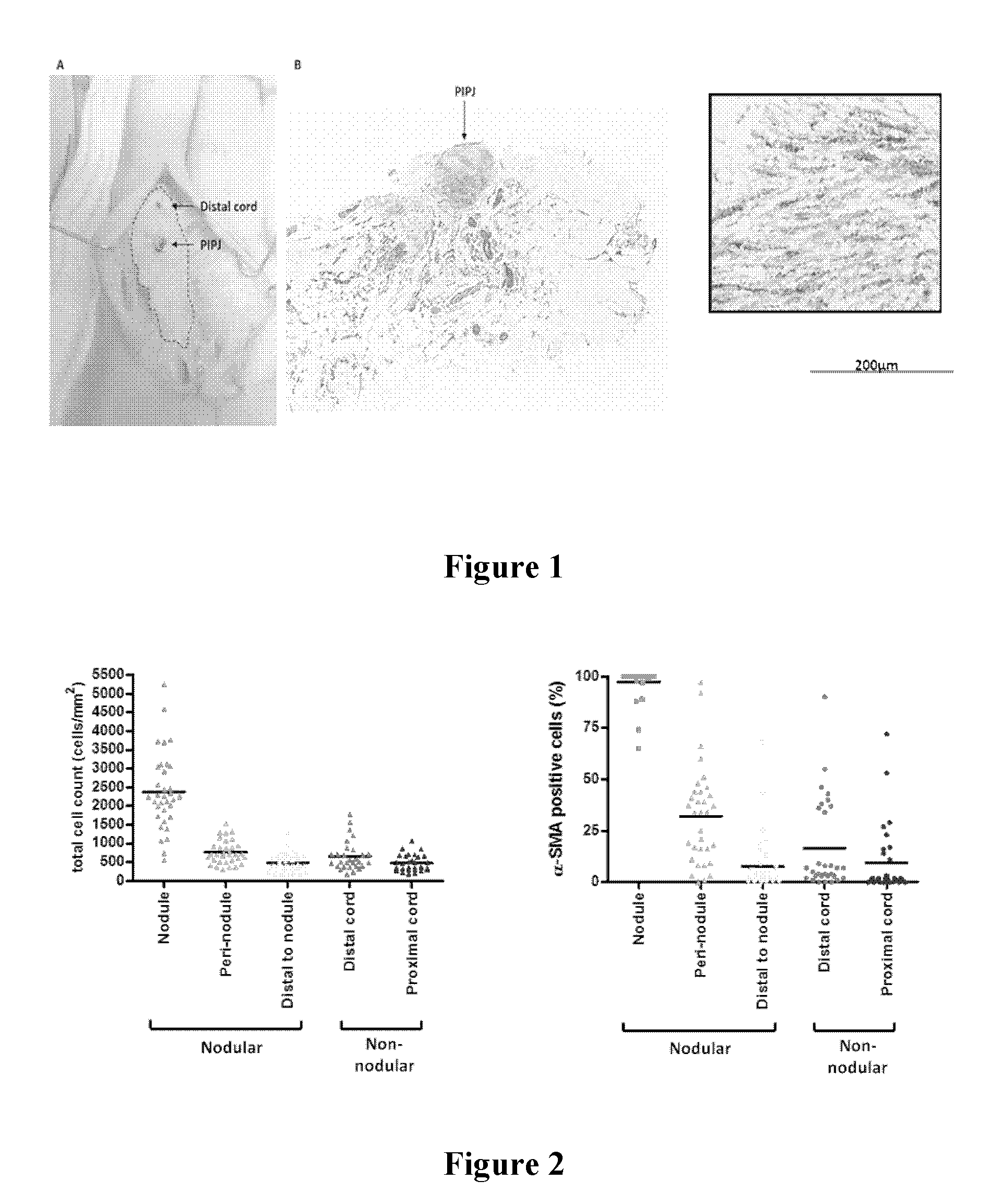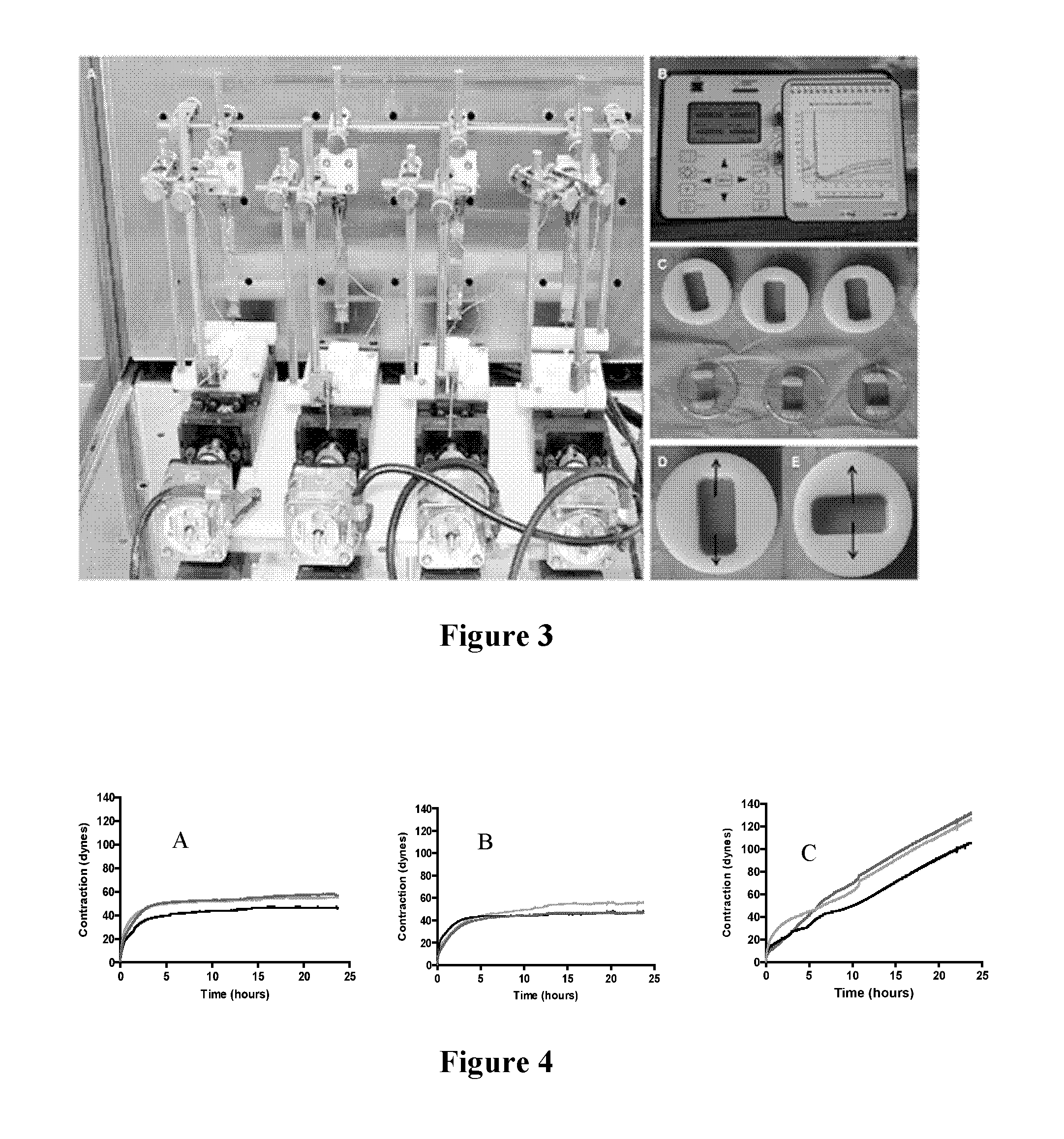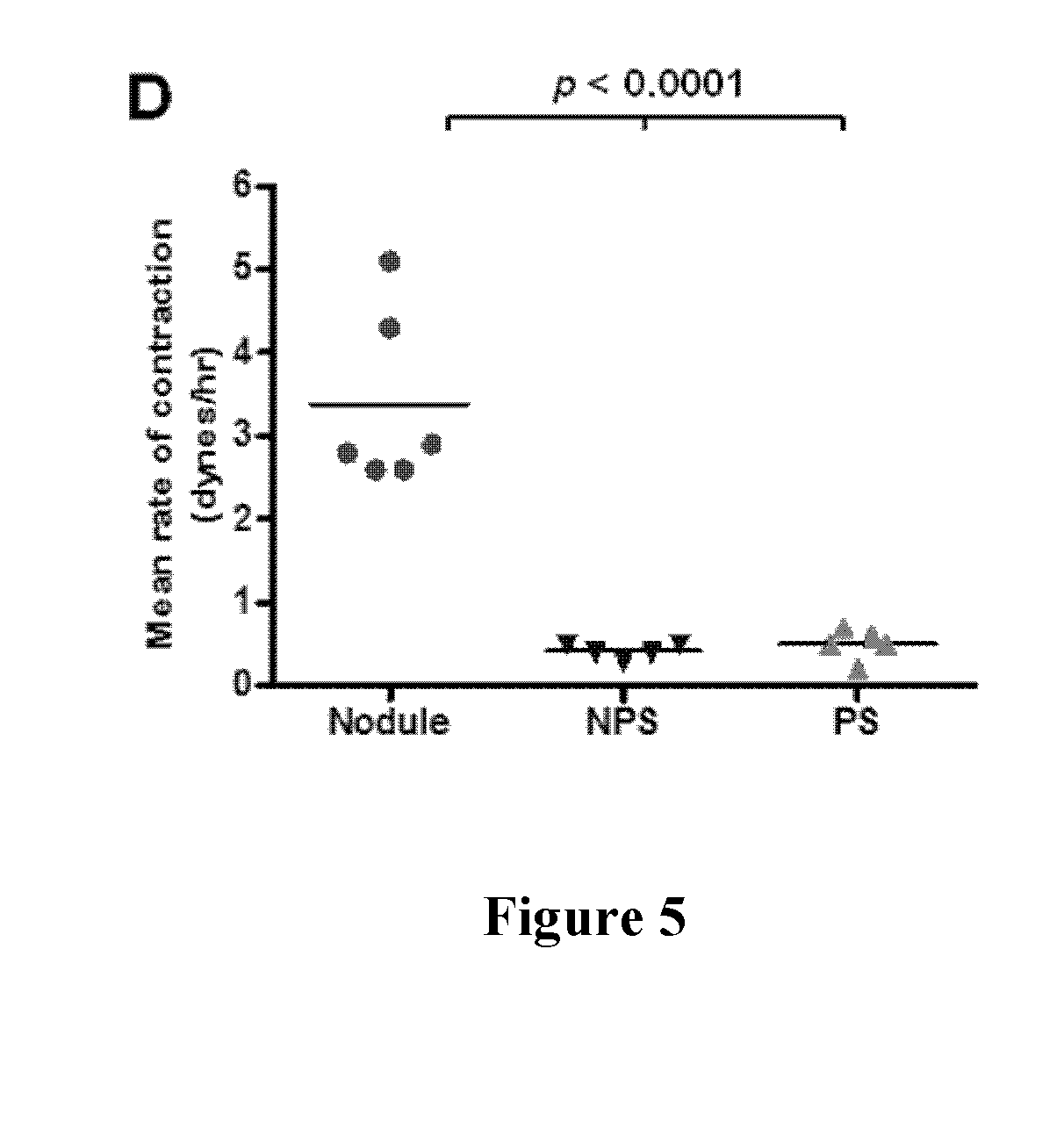Treatment for dupuytren's disease
a dupuytren's disease and treatment technology, applied in the field of dupuytren's disease, can solve the problems of unknowable dupuytren's disease, uncurable underlying disease, and inability to cure the disease, so as to avoid surgical intervention and the associated recovery time
- Summary
- Abstract
- Description
- Claims
- Application Information
AI Technical Summary
Benefits of technology
Problems solved by technology
Method used
Image
Examples
example 1
[0131]Over 100 Dupuytren's patient samples were collected to examine myofibroblast distribution. Our data on >100 Dupuytren's cords show that in the majority of patients, myofibroblasts are concentrated in nodules, located in the palm and at the level of the affected joints (see FIG. 1). According to FIG. 1, nodules rich in myofibroblasts are located in the vicinity of the finger joints. FIG. 1 shows: A: intraoperative view of Dupuytren's cord, with location of proximal interphalangeal joint (PIPJ; 1) marked; B: Low magnification photomicrograph of histological section stained for α-smooth muscle actin. A collection of α-SMA rich cells in a nodule is located in the vicinity of the PIPJ; C: High magnification view of nodular area, showing α-SMA positive cells (myofibroblasts).
[0132]Of over 100 cords analysed, more than 60% contained nodules. Although there was marked heterogeneity, nodules were very cellular, with approximately 2.5 thousand cells per mm2 arranged in whorls. On averag...
example 2
Role of Inflammation in Dupuytren's Disease
[0142]The nodules were then examined for the presence of other cell types, specifically inflammatory cells. We found that large numbers of both macrophages and mast cells were present in nodules but not in non-nodular regions of the cords.
[0143]FIG. 7 shows inflammatory cells in Dupuytren's nodule and cord. Digital cord sections were serially stained for α-SMA, CD68 positive macrophages and mast cell tryptase. The images are representative of 15 patient samples.
[0144]We systematically quantified the number of inflammatory cells observed throughout excised Dupuytren's cord tissue in 10 patient samples. For each region (nodule, cord distal to nodule and non-nodular cord), the total number of cells, the number of α-SMA positive cells and cells stained for neutrophil elastase, mast cell tryptase, CD3positive T cells, CD 4 positive T cells, CD68 positive macrophages were counted (×20 magnification) (Table 1).
[0145]
TABLE 1Quantification of total ...
example 3
Advanced Glycation End Products and their Receptor
[0147]We examined the distribution of RAGE in Dupuytren's tissue and both palmar and non-palmar skin. We found abundant staining for RAGE in Dupuytren's nodules, where it co-localised with the myofibroblasts (seeFIG. 8). Digital cord samples were longitudinally bisected and fixed in formalin. Histological sections were taken from the cut surface of cord and serial sections were stained for (A, C) α-SMA and (B, D) RAGE antibodies. Scale bars as shown. Images are representative from 15 patient samples. RAGE co-localises with α-SMA distribution in Dupuytren's nodules.
[0148]We also found increased staining for RAGE in the superficial layers of the epidermis in palmar skin compared to non-palmar skin and FACS staining showed significantly higher RAGE expression by dermal fibroblasts from palmar skin compared to non-palmar skin. See FIG. 9.
[0149]Non-palmar and palmar skin samples were fixed in formalin. Histological sections were stained f...
PUM
| Property | Measurement | Unit |
|---|---|---|
| time | aaaaa | aaaaa |
| time | aaaaa | aaaaa |
| time | aaaaa | aaaaa |
Abstract
Description
Claims
Application Information
 Login to View More
Login to View More - R&D
- Intellectual Property
- Life Sciences
- Materials
- Tech Scout
- Unparalleled Data Quality
- Higher Quality Content
- 60% Fewer Hallucinations
Browse by: Latest US Patents, China's latest patents, Technical Efficacy Thesaurus, Application Domain, Technology Topic, Popular Technical Reports.
© 2025 PatSnap. All rights reserved.Legal|Privacy policy|Modern Slavery Act Transparency Statement|Sitemap|About US| Contact US: help@patsnap.com



